Mexico
Daniela freaked out when she saw it – a bouquet of several dozen chubby little purple bananas jutting out in every possible direction. Or at least that’s what it looked like to me. Daniela knew exactly what it was: cocuixtle, a rare tropical fruit grown in just a few parts of Mexico. Only once before had she been able to source it for her cooking. Now, here it was, at an open-air farmers market in Guadalajara.
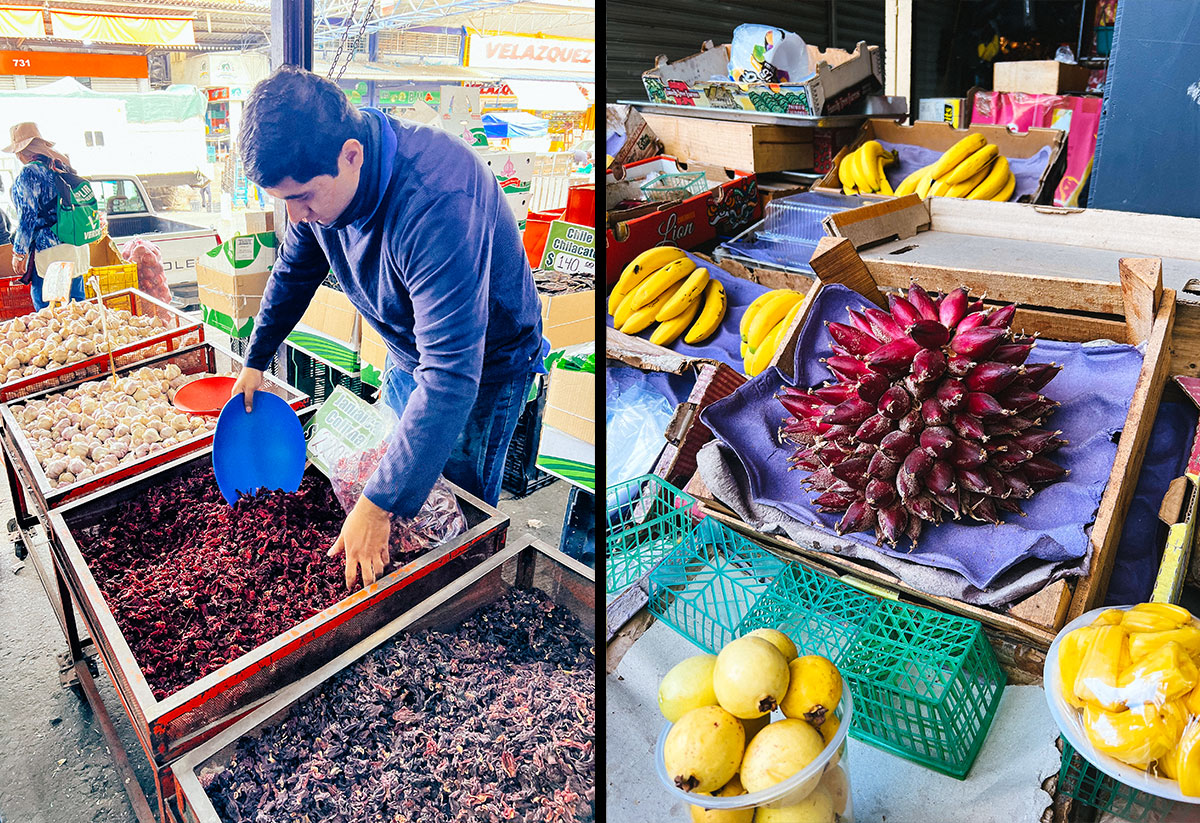
We had gone to the market in search of inspiration. I had come to Mexico in the middle of January to make a beer – at Daniela’s invitation. I’ve known the chef since her days at New York City’s Cosme. For most of that legendary seven-year run, Stillwater produced an heirloom corn saison, Damiana, just for the restaurant. Many moons later, Daniela is preparing to open a new venture called Rubra. Located in Punta de Mita, a small beachy resort town at the tip of the jungle, Rubra is a triumphant homecoming to her native country. When she asked me for a new house beer, I can’t say I hesitated.
As with a few other chefs I know, one of Daniela’s favorite beers is Extra Dry. So, I developed a base recipe that remixed Extra Dry with a touch of Cellar Door. I learned a long time ago when brewing on small systems in relatively rural pockets of Latin America that it’s best to not overthink things. But I’ve also firmly believed in showcasing fresh fruit and other ingredients indigenous to those areas. This is how I ended up in a Guadalajaran market with Daniela Soto-Innes.
“Oh my god, we never see this,” she said, holding the cocuixtle. She asked the booth’s proprietar if we could taste the fruit. “Brian, you gotta try it.”
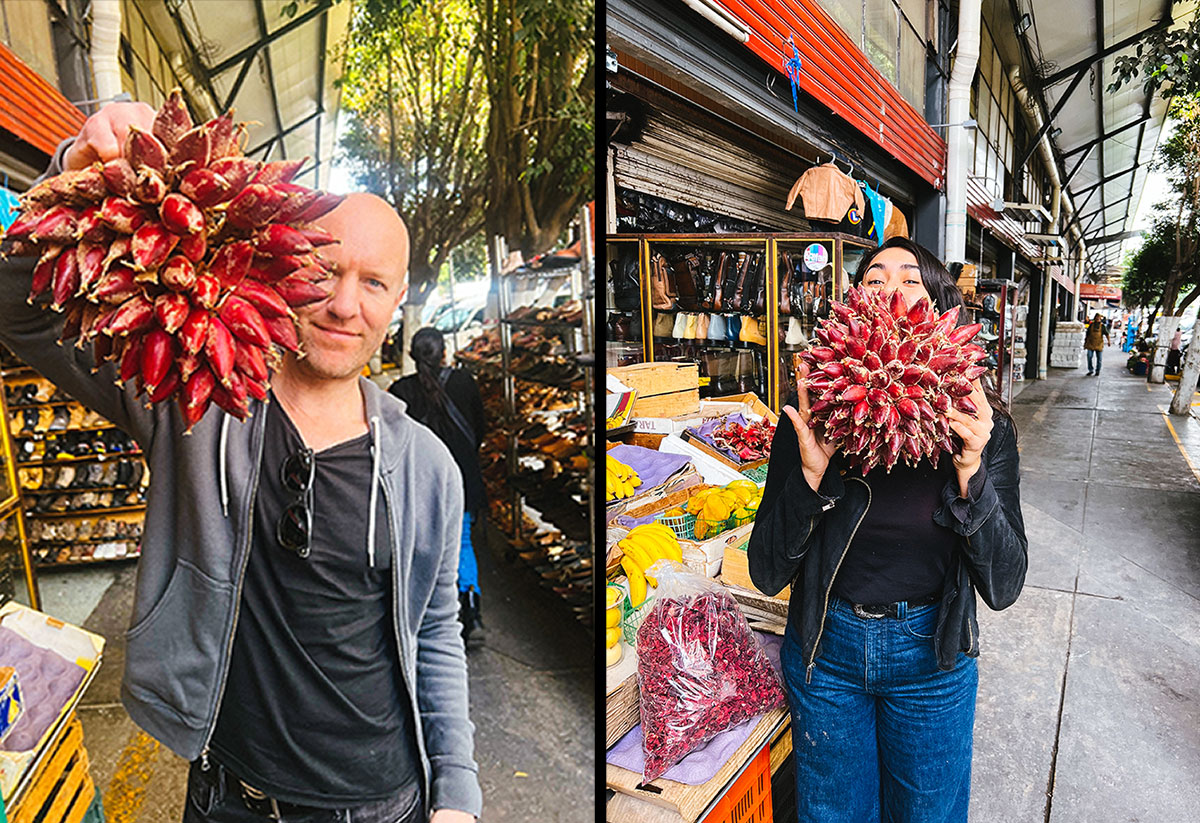
It was tangy and bright, subtle, a bit reminiscent of dragon fruit. We bought all of it. We scoured the rest of the market for more, but our luck wouldn’t be extending any further that day. Most vendors had no idea what we were even inquiring about. It didn’t matter. I knew we had enough to imbue our saison with an essence of the fruit. A touch of hibiscus and we’d have something pink. Or reddish. Or as you might say in Spanish: rubra. (That word has multiple other meanings, including to “embody” or “incarnate.”)
Back at the brewery, Daniela and I – along with her assistants, a group of women she affectionally calls “the chikis” – peeled the cocuixtle, removing its white flesh and black seeds. All of this fruit would get blended in a Vitamix we had on hand and then added to the beer’s whirlpool the next day.
The brewery was tiny, the size of a small house, with a 200-liter brewhouse where the living room would be. But the brew team was energetic and inquisitive. Our time together reminded me of my initial collaborations in Brazil almost a decade ago, encountering a relatively nascent craft beer scene that was eager to experiment and soak up outside perspective. These are the kind of experiences I missed sorely in the doldrums of the pandemic. They remain invigorating.
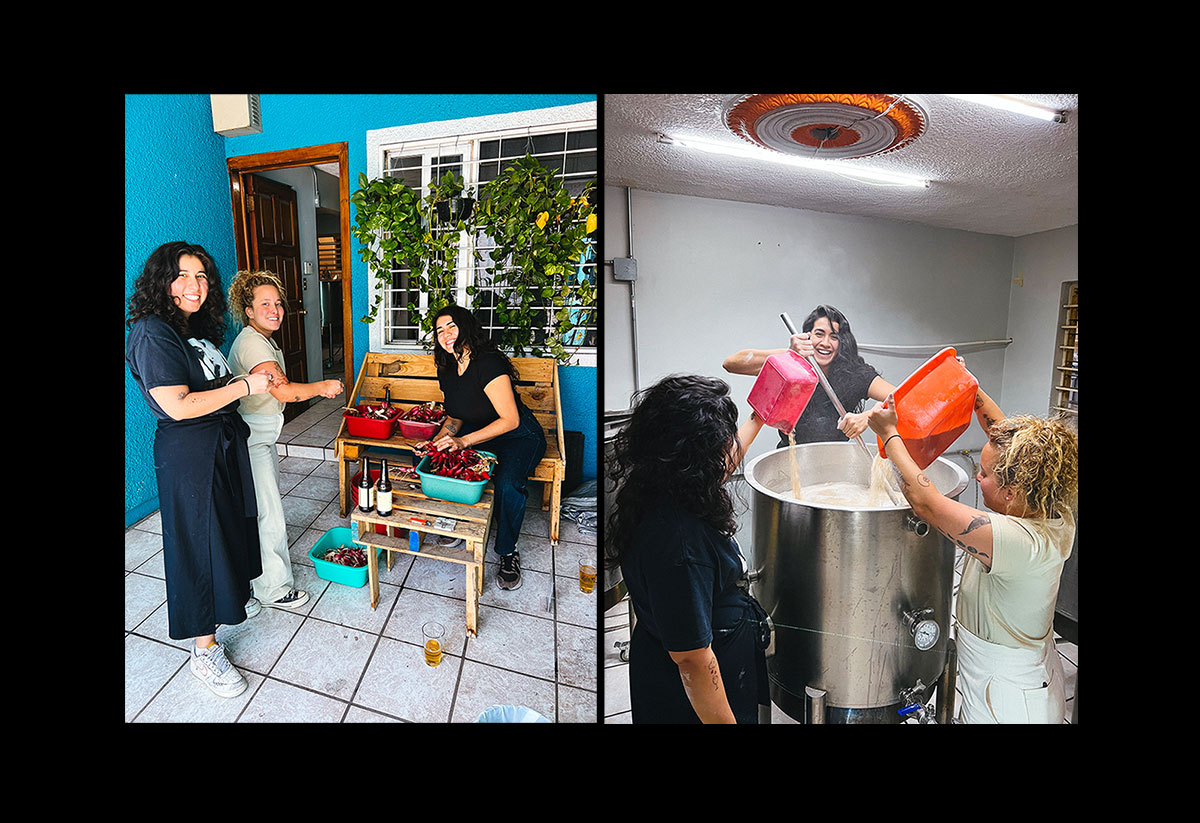
The same could be said for the entirety of the visit. Daniela is a vibrant, infectiously energetic person. And she’s a world-class host. From Puerto Vallarta to Punta de Mita to Sayulita to Guadalajara to Mexico City, the itinerary was a whirlwind, fueled by reggaeton and outstanding mezcal. As I approached its end, Daniela and the chikis sweetly tried to convince me to extend my stay. The offer would have been harder to refuse if there wasn’t so much happening back in Washington.
Washington
That’s where the second wave of Stillwater beers brewed at Talking Cedar was beginning to roll off the production line. The Chehalis Tribe’s state-of-the-art facility, two hours off south of Seattle in Grand Mound, has served as the epicenter of Stillwater production since late 2022. After months of piloting test batches and dialing in recipes, Stillwater’s initial offerings from our new home were packaged in December. This first wave bore classiques (Cellar Door and Stateside Saison), modern classiques (Extra Dry, Business, Insetto, Shoegaze, and the latest variant of Wavvy), and two new collaborations with Filson to celebrate the stalwart Pacific Northwest brand’s 125th anniversary (Rustic Gold IPA and Martime Gose). Also, inspired by countless Sunday dinners at my neighborhood Italian joint. La Rustica, we released an Italian pils called, naturally, Red Sauce.
I couldn’t be happier with the partnership between Stillwater and Talking Cedar. Stillwater has its own dedicated production staff, including our first head brewer, Ryan Myhre, a talented tactician whose taste I’ve found to be simpatico with mine. Together, we have full control over Stillwater’s beers – at a scale of 120-barrel batches. We have complete freedom too, which has allowed me to bring wild yeast back into Stillwater’s recipes. Cellar Door and Stateside Saison, much to my delight, once again feature custom Brett blends, just as the initial iterations did in my Baltimore basement over 15 years ago.
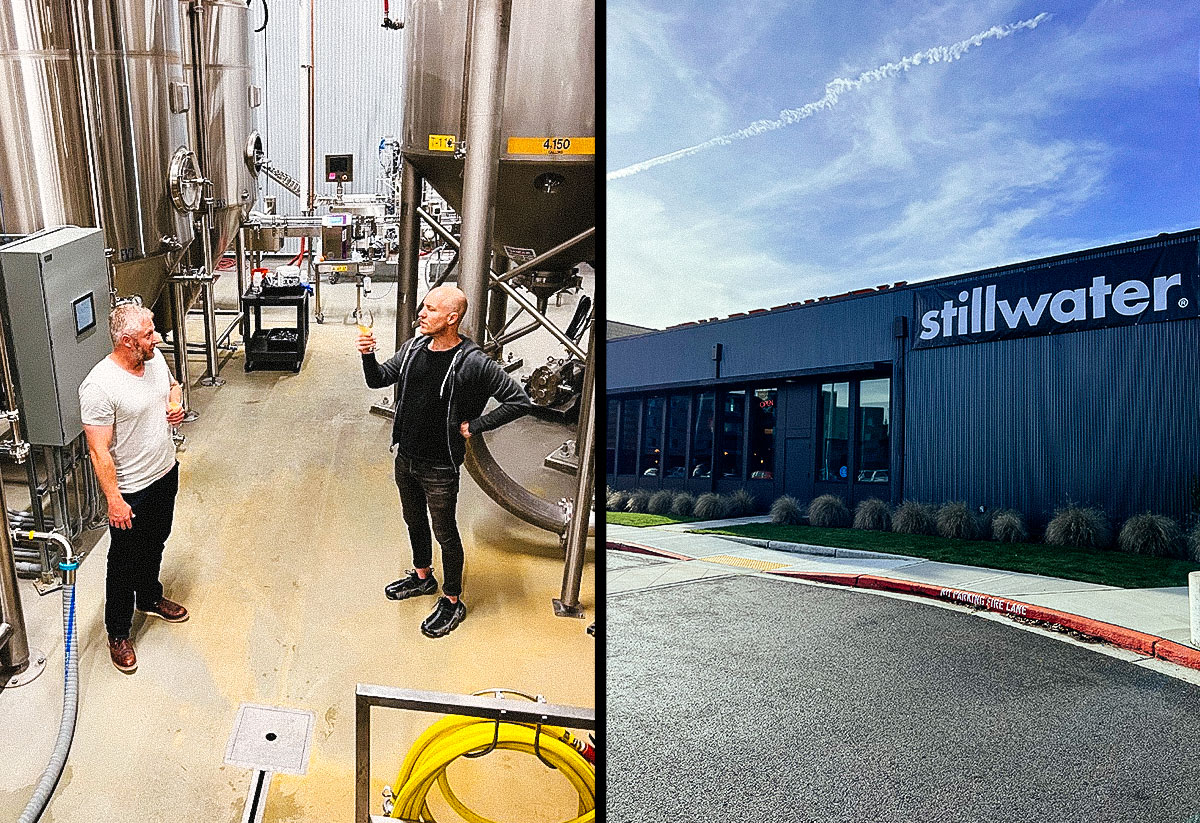
The ongoing second wave, meanwhile, features more recent callbacks and a bevy of new beers. The latter, as you might imagine, are particularly exciting for me. Extra Thin Crust, a collaboration with Matt Storm’s and my IPA-focused venture Fast Fashion, takes Stillwater’s sake-style saison staple Extra Dry and blows it out with a dry-hop of more Citra, more Hallertau Blanc, and Fast Fashion’s proprietary hop Anchovy, an experimental varietal developed and grown by the legendary Segal Ranch. Anchovy and its unique watermelon Jolly Rancher character are also swimming through Goldfish (a Bruxellensis pale ale tuned to a similar frequency as Orval) and Pacific North Wild (a tribute to our surrounding area in the form of a wild IPA otherwise hopped with Yakima Valley classics and aged on oak). Another freshie, sans Anchovy, is Kiss Kiss, a double chocolate milk stout that tastes like a melted candy bar. Because sometimes the people need a double chocolate milk stout that tastes like melted candy bar.
Additionally, I’ve been happy to give a few existing Stillwarter recipes their Grand Mound debut. Extra Loud, a collaboration with Ali Shirazinia (aka DubFire), was easily my favorite Stillwater beer of 2021, so it’s most welcome having a fresh batch of the India pale saison just as the Seattle weather begins to clear. Likewise, I believe Rosé Gold (a wild ale infused with rose hips and hibiscus, calibrated to a beckoning 4.4%) will pair perfectly with the warmer months.
There’s even more on the immediate horizon. Foeder beer dry-hopped with Phantasm. The return of Classique. Wavvy Triangle – hopped entirely with NZ Freestyle Hops and fermented with a proprietary blend of kviek and wine yeasts. It’s all very exciting. It has also taken a tremendous amount of work – both to set in motion and to maintain. Stillwater is immensely fortunate to be bolstered by the work of Samantha Morin, our sales director and general Swiss army knife, along with our new CFO Adam Greenberg, who helps keep the numbers straight.
Having a team support with Stillwater’s production and logistical operations allows me to spend more time out in the market. It may seem like a luxury, but interacting with longtime fans and curious consumers alike, explaining the concepts behind our beers and hearing IRL feedback, has always been vital to Stillwater’s success. Sometimes this takes the form of a local one-off events, like my live-audience podcast taping with Grit & Grain. But more often it’s a string of gatherings on a visit to another part of the country – or elsewhere in the world.
Japan
I closed 2022 and began 2023 on such a tour, one that was notably sweeping and took me far from home.
The origins of the expedition were personal. The holidays were approaching, and I wanted to get out of the country. So, I asked Ali what his December looked like. Since the release of his most recent record, Evolv, in October, Ali has been playing Dubfire shows around the world. No return ticket, just forward momentum. He told me that the year’s end would find him in Bangkok and then Japan. As it turned out, Stillwater had just sent one of our largest orders ever to Japan, pallets of beer made at both Talking Cedar and North Brewing, our production base in the UK. It was pure serendipity. I asked my longtime Japanese distributor AQ Bevolution if they were game for a Stillwater Japan tour. They said fuck yes. I told Ali that I would meet him in Thailand.
Outside of a festival that DubFire had been booked to play and the ceaseless buzz of the city, Bangkok was a relaxing prelude to Japan. We ate at the classic Blue Elephant, watched the World Cup final, and, against better judgement, rode in perilous motorized rickshaws. Then we flew to Japan.
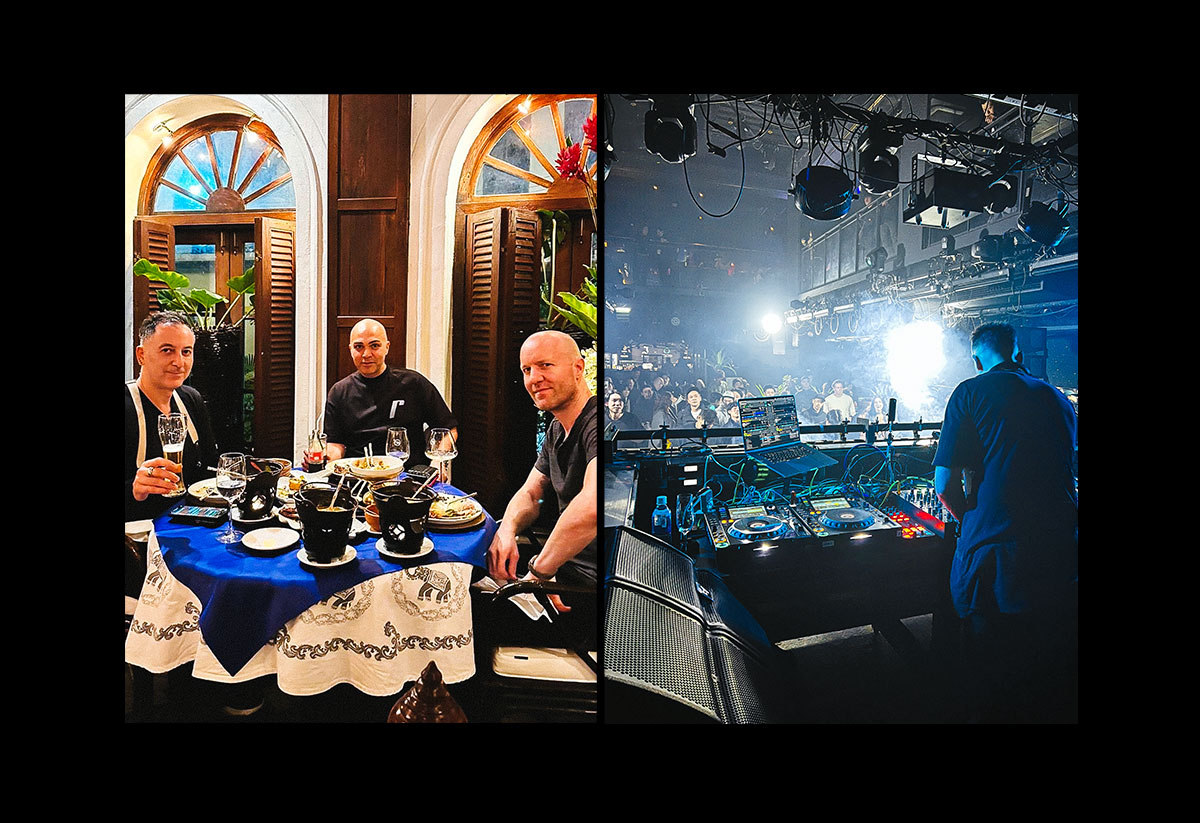
I’ve always felt a connection with Japan and its people. The country has played a significant role in the story of Stillwater, too. Superhop was initially released as an exclusive for the 137-year-old department store chain Isetan. Extra Dry stemmed from Stillwater’s collaboration with Naka’s iconic Kiuchi Brewery. (It also was a sake-inspired saison, and after their U.S. importer refused to carry it on account of a disdain for nomadic breweries, I created the recipe for Extra Dry.) The country has long been one of Stillwater’s strongest overseas markets.
People have asked me why that is, why the Japanese have been so warm to Stillwater, and while I certainly can’t answer definitively, I think it’s because of their appreciation for nuanced and delicate flavors. In that regard, I would like to believe that there’s a symmetry to much of the country’s cuisine. And it was flattering on this trip to continue hearing praise for the brand’s aesthetic, especially considering that I – working in concert with Michael McNeive at Drexler – assumed complete control of Stillwater’s label design and artistic composition in 2020.
When it came to the liquid inside our cans, Cellar Door and Shoegaze appeared to be the biggest hits of the two-week tour. That was assuredly the case for my own consumption. If I wasn’t drinking a highball, I was drinking a Cellar Door or Shoegaze. Of everything AQ brought into Japan, those two beers felt the most quintessentially Stillwater – dry, estery, wonky, and, with the Brett beginning to sing, one might even say dusty. I’m the toughest critic of Stillwater’s output, and I couldn’t find a flaw in them.
I was joined in all outings by AQ founder Albert Kuwano and a revolving crew of his team and friends. Albert and I travelled from the island of Okinawa up to Osaka, then further north to Aomori, before a grand finale in, where else, Tokyo. Each day and night brought new events at new venues – beer bars, bottle shops, restaurants, clubs. Even Ali had to marvel at the pace.

Obviously, I did make time to see his sets at Club Joule in Osaka and Tokyo’s VENT, though. The Tokyo show, in particular, was bonkers. A minimal space with a righteous sound system, VENT has a capacity of maybe 300. On that Saturday night – Christmas Eve, no less – it had to be filled with 500 people. Just wall to wall. You couldn’t even move. I was utterly content not to leave Ali’s side in the DJ booth.
My own shows in Tokyo, while not nearly as raucous, brought me considerable joy. I DJed at Titans, AQ’s taproom and bottle shop with Beer Cats, a few nights before New Year’s. People came out, people actually got down. The vibes were equally good when I spun at Bonobo – a small but legendary club in Shibuya-ku, built in the 1980s and still replete with vintage speakers and a rotary mixer. There are worse places Stillwater has been served.
So much like Mexico, Japan was refreshing, albeit in its own different way. It felt incredible to be back out in the scene, interacting with the audience. There were times in Stillwater’s first decade where an extended trip like that might grind me down and burn me out. Honestly, at a certain point, I’d get cranky and insular. But coming out of the pandemic and following three years of significant changes – both for Stillwater and in my own life, to whatever degree I can separate those two things – I have a renewed appreciation for being out in the world as the face and personality of the brand. Of course, it didn’t hurt to be consistently greeted by such enthusiasm in Japan and to be touring with fresh beer that makes me proud.
It felt like a proper way to kick off Stillwater 3.0, the new phase of this ever-evolving project. I’m still carrying the energy with me.